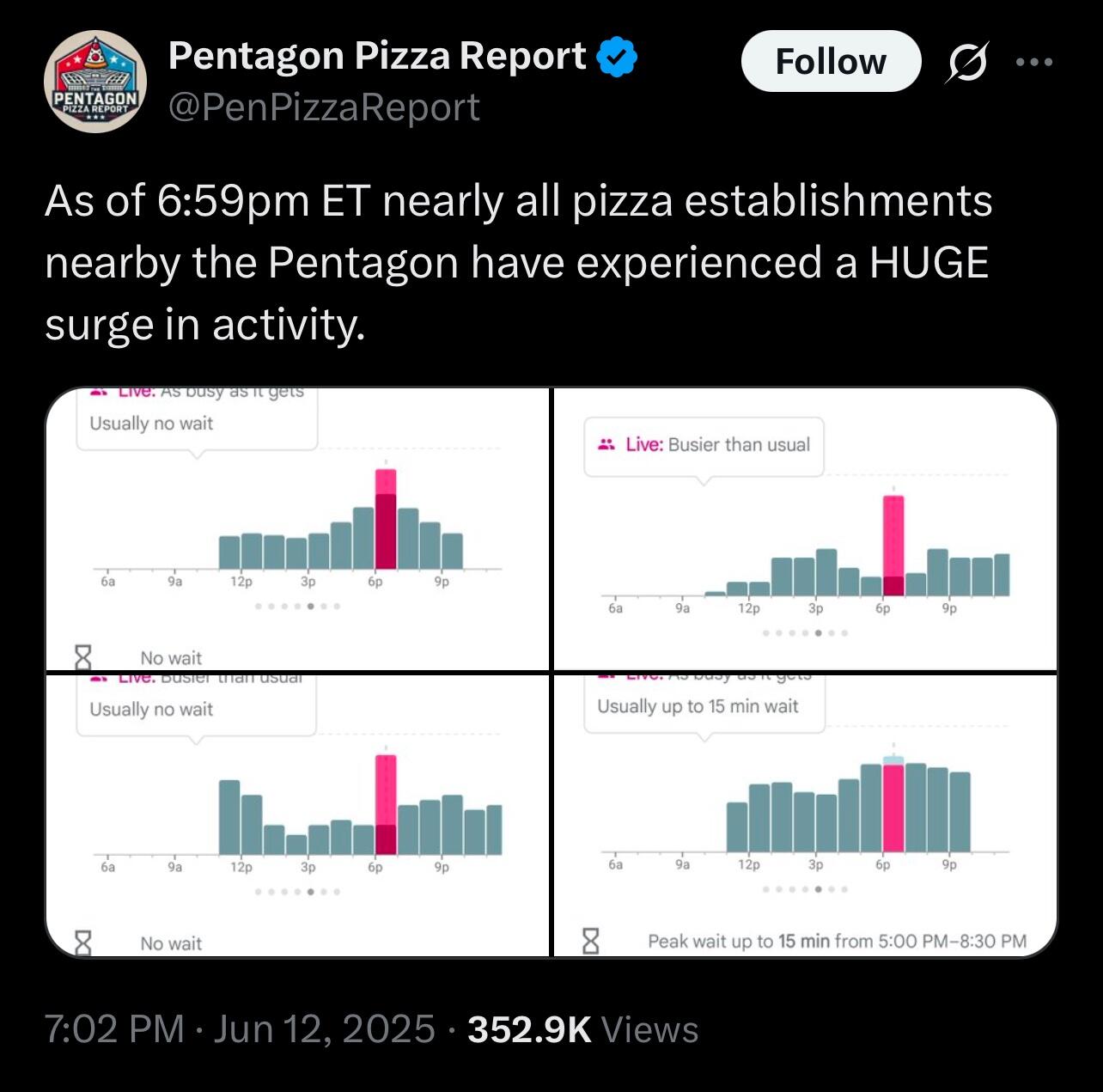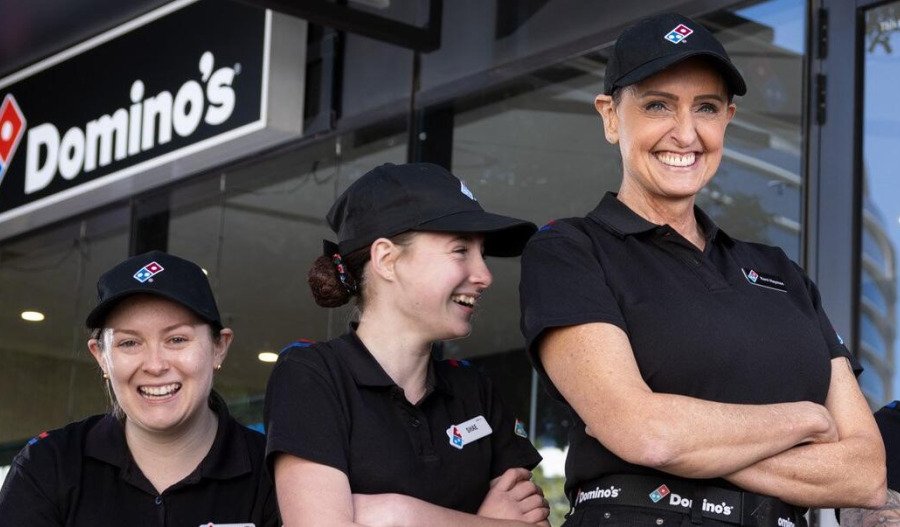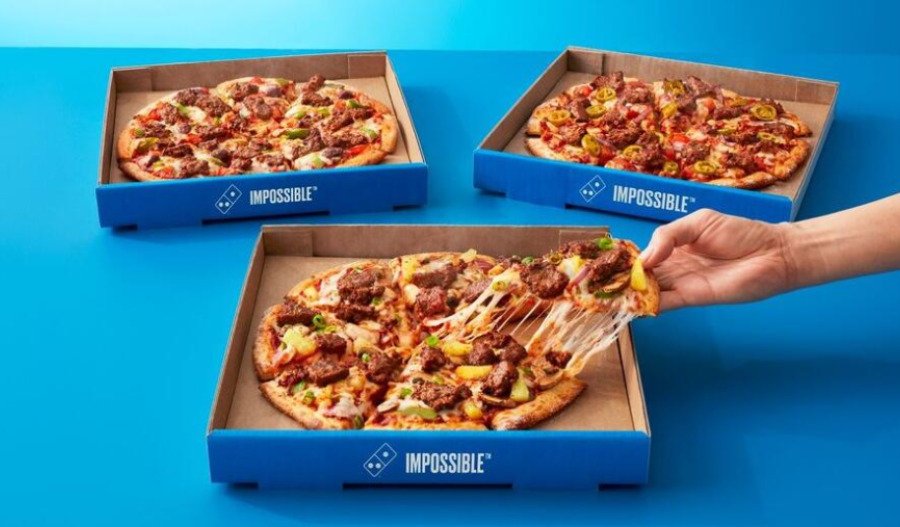As geopolitical tensions escalate across multiple theatres, an unlikely indicator has again emerged from the shadows of open-source intelligence (OSINT): pizza delivery patterns around America's most sensitive government facilities.
No, this isn't some internet conspiracy theory dreamed up by armchair analysts.
What began as Cold War tradecraft has evolved into a democratised early warning system that retail traders are now attempting to weaponise for market advantage.
The uncomfortable reality? Sometimes the most sophisticated intelligence apparatus in the world reveals its hand through something as mundane as a rush for late-night takeaway…
Deep pan, deeper intel
Recent events have thrust the Pentagon Pizza Index back into the spotlight with alarming precision.
As Israel prepared retaliatory strikes against Iran just days ago, social media accounts tracking pizza delivery patterns around Arlington detected "extremely high levels of traffic" at the closest Domino's to the Pentagon - hours before any official announcements.
The Pentagon Pizza Report, with over 50,000 followers on X, has documented unusual activity patterns that precede major geopolitical developments with uncomfortable accuracy.
Their posts now garner millions of views, transforming what intelligence professionals once guarded as operational security into public entertainment.
Yet beneath the memes and social media buzz lies a sobering truth about information warfare in the digital age: the democratisation of intelligence collection has been fundamentally altered.
A slice of history
The methodology traces back to Soviet "Pizzint" spy ops when Moscow's intelligence services systematically monitored American government food delivery patterns as predictive indicators of military engagement.
The Russians understand something Western policymakers are only now grappling with - operational behaviour reveals strategic intent - and that’s where OSINT comes in.
Frank Meeks, while operating multiple Domino's franchises across Washington D.C., recorded his busiest CIA delivery day on August 1st 1990 - precisely when Saddam Hussein was preparing to invade Kuwait.
Similar spikes occurred with U.S. intervention into Grenada (1983) and during the Panama operations (1989).
In fact some sources reported that the pizza index has been able to accurately predict as many as 21 national crises over the years.
A clear pattern had emerged: when government officials engage in crisis management, extended work hours of up to 16 to 20 hours straight, required increased food deliveries to secure facilities.
CNN's Wolf Blitzer said it best back in 1990:
"Bottom line for journalists: Always monitor the pizzas."
The pizza trade
Fast-forward to 2025, and a new generation of politically savvy social media users are tracking the trend.
But they aren't the only ones.
For defence traders the pizza index could provide useful, albeit unconventional, insight into how they should invest.
Following the recent Iran-Israel strikes on June 13, global defence contractors saw shares jump as high as 4%, an attack that was accurately predicted by the pizza index.

While a Morningstar analyst, Nicolas Owens, said the rush was an “exaggerated reaction”, the Middle East has remained a hot button area for defence traders over the decades, from low level stocks to multi-million dollar arms contracts.
“As we have pointed out before, the dots between military combat and the profit of a defence contractor do not connect nearly as directly as investors seem to imagine,” said Owens.
So while it might not be the safest of markets, if Owens is to be believed, the Pizza Report certainly seems to still provide political commentators, traders and analysts an accurate insight into where global conflicts are headed and what that means socio-economically.



